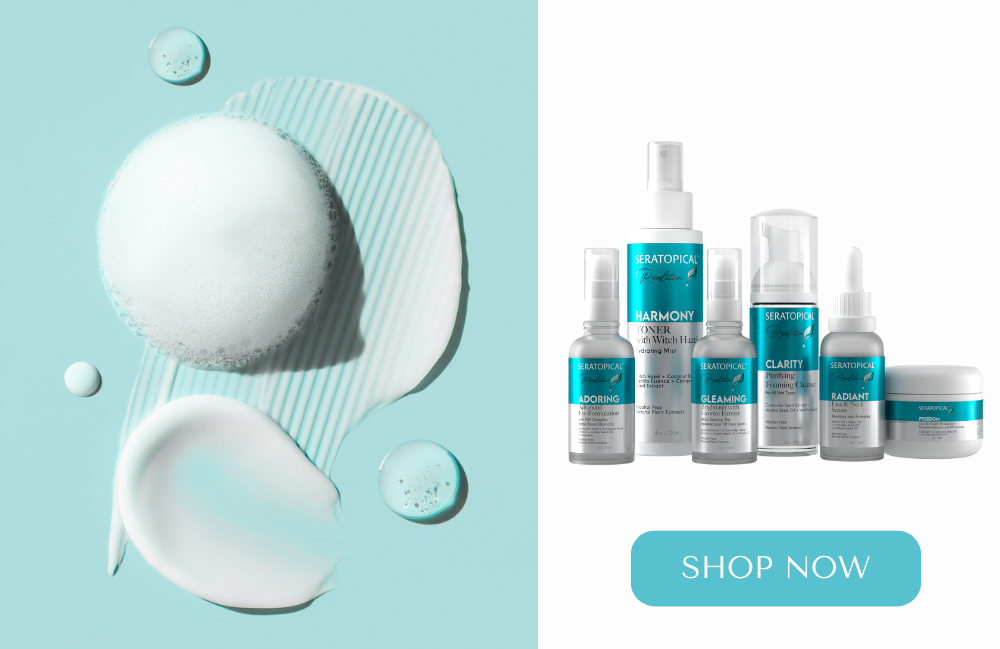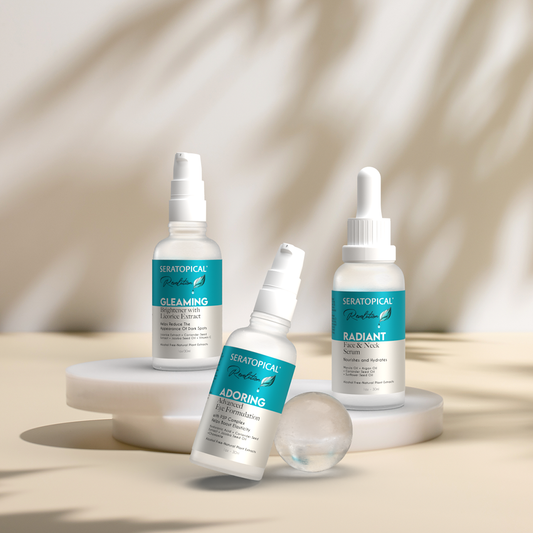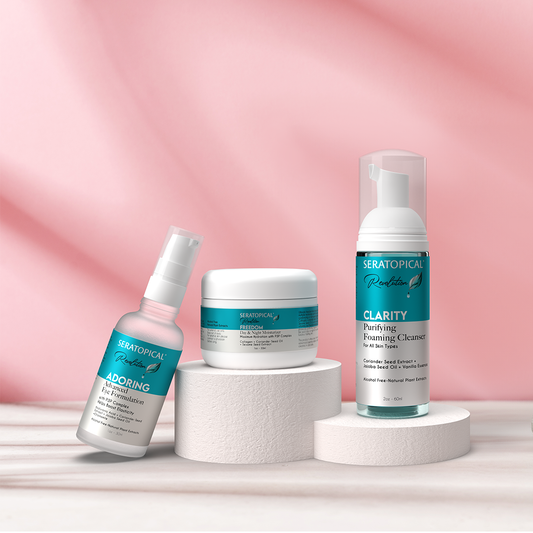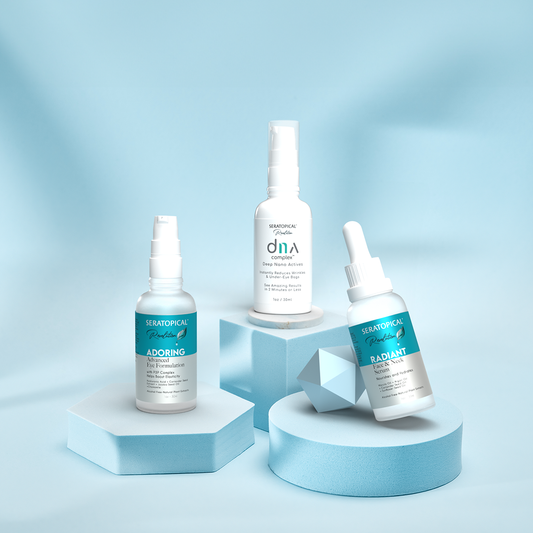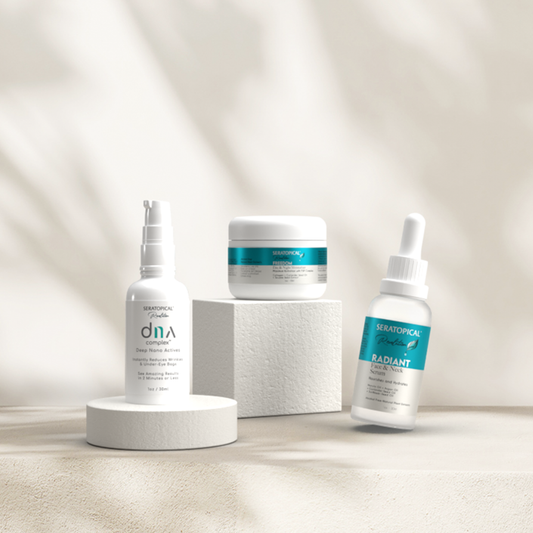Skin exfoliation has many different benefits for your skin and it may be the perfect addition to your weekly beauty routine. What is exfoliation, how do you exfoliate and what benefits may exfoliation bring to your skin health? We explore all these below.
What Does It Mean to Exfoliate?
Exfoliation is the process where dead or dry skin cells are removed from the top layer of the skin making use of either chemical exfoliation or manual exfoliation. Chemical exfoliants are ingredients in skincare products that are created specifically for the purpose of exfoliation of the skin - ingredients such as bet hydroxy acid (salicylic acid) or glycolic acid for example, and generally done by a dermatologist. Manual exfoliation is where a product such as a skin buffer or a product with actual bead-like properties are massaged into the skin (usually in circular motions) to help remove dead or dry skin cells from the surface of the skin. This process may also stimulate blood flow.
Benefits of Exfoliating Your Skin
There are many possible benefits of skin exfoliation. Exfoliating the skin is a wonderful technique to incorporate into your skincare routine, as a person may enjoy the physical process of “pampering” themselves once or twice a week with an exfoliating face mask, or exfoliation “session.” Exfoliating the skin manually may stimulate blood flow under the skin's surface which in turn could promote a healthy glowing skin. Exfoliation may also help to remove clogged pores and remove dead skin cells from the skin's surface, and may stimulate collagen production., Because exfoliation may stimulate collagen production, there is the possibility that exfoliation may therefore play a role in reducing signs of aging such as fine lines and wrinkles, and in helping to improve uneven skin tone.
What are the Different Types of Exfoliation?
Exfoliation is a skincare practice aimed at removing dead skin cells, promoting cell turnover, and revealing a smoother complexion. There are primarily two types of exfoliation: mechanical and chemical.
Mechanical Exfoliation: This method involves physically scrubbing the skin to remove dead cells. Common mechanical exfoliants include facial scrubs, brushes, sponges, or devices designed for this purpose. These products typically contain abrasive particles like sugar, salt, or microbeads. While effective, it's important to use gentle, non-abrasive formulations to avoid irritating the skin.
Chemical Exfoliation: Chemical exfoliants use acids or enzymes to dissolve dead skin cells. This method is often gentler than mechanical exfoliation and is suitable for various skin types. Two main categories of chemical exfoliants are:
- Alpha Hydroxy Acids (AHAs): Examples include glycolic acid (derived from sugar cane) and lactic acid (found in sour milk). AHAs are water-soluble and work on the skin's surface, making them effective for addressing issues like uneven skin tone and fine lines.
- Beta Hydroxy Acids (BHAs): Salicylic acid is a common BHA known for its oil-soluble nature, making it effective in targeting deeper within the pores. BHAs are suitable for oily or acne-prone skin.
It's essential to choose an exfoliation method based on individual skin type and concerns. Over-exfoliation can lead to irritation, so a balanced approach, tailored to specific needs, is key for achieving healthy, radiant skin.
What Exfoliator Works Best Per Skin Type?
The most effective exfoliation method for your skin type depends on whether you have normal, dry, oily, sensitive, combination, or mature skin. Here are some recommendations:
Normal Skin: Both mechanical and chemical exfoliants work well for normal skin. You can use a gentle scrub or opt for alpha hydroxy acids (AHAs) like glycolic acid for chemical exfoliation.
Dry Skin: Chemical exfoliation with AHAs like lactic acid is often more suitable for dry skin, as it helps to remove dead skin cells without causing additional dryness. Consider using a mild chemical exfoliant once a week.
Oily/Acne-Prone Skin: Beta hydroxy acids (BHAs), particularly salicylic acid, are beneficial for oily or acne-prone skin. BHAs penetrate into the pores, helping to exfoliate and reduce excess oil. You may use a salicylic acid-based product 2 to 3 times a week.
Sensitive Skin: Enzymatic exfoliants, such as those containing papaya or pineapple enzymes, are often gentler on sensitive skin. Mechanical exfoliation should be approached with caution, and chemical exfoliants with lower concentrations can be used infrequently.
Combination Skin: A balanced approach can work well for combination skin. Use a combination of mild mechanical and chemical exfoliants to address different areas of the face. Adjust the frequency based on the needs of specific areas.
Mature/Aging Skin: AHAs like glycolic acid can be beneficial for mature skin as they help improve skin texture and reduce the appearance of fine lines. Consider using a mild AHA exfoliant 2 to 3 times per week.
Always patch test new products to ensure they don't cause irritation, and introduce exfoliants gradually into your routine. Additionally, be mindful of other products in your skincare routine, and avoid using multiple exfoliating products simultaneously to prevent over-exfoliation and sensitivity. If you have specific concerns or conditions, consulting with a dermatologist can help determine the most suitable exfoliation approach for your skin type.
How Often Should You Exfoliate?
The frequency of exfoliation depends on your skin type, the exfoliation method used, and individual preferences. However, in general, exfoliation should be done in moderation to avoid over-stripping the skin and causing irritation. Here are some guidelines on when to exfoliate:
Normal/Combination Skin: 2 to 3 times per week is generally suitable for mechanical or mild chemical exfoliation.
Dry/Sensitive Skin: Once a week or every 10 days may be sufficient to avoid excessive dryness or irritation. Consider using gentler exfoliants.
Oily/Acne-Prone Skin: 3 times per week, or as recommended by a dermatologist, especially if using products containing salicylic acid (BHA).
Mature/Aging Skin: 2 to 3 times per week using chemical exfoliants, which can help address fine lines and uneven skin tone.
Always Follow Product Instructions: Read and follow the instructions on your chosen exfoliating product. Some formulations may recommend less frequent use, especially if they are potent or contain higher concentrations of active ingredients.
Consider the Season: Adjust the frequency of exfoliation based on the season. Skin may be more sensitive in winter, so you might reduce exfoliation during colder months.
Listen to Your Skin: Pay attention to how your skin reacts. If you experience redness, excessive dryness, or irritation, reduce the frequency of exfoliation.
Nighttime Routine: Exfoliate at night to avoid increased sensitivity to sunlight. Always follow up with a moisturizer and sunscreen during the day.
Remember that everyone's skin is unique, so it's essential to tailor your exfoliation routine to your specific needs and adjust as necessary. If you have concerns or specific skin conditions, it's advisable to consult with a dermatologist for personalized guidance.
Best Exfoliator For Your Face
The exfoliation products you use will depend largely on your skin type, your budget and what products are accessible to you. At SeraLabs we love skin care products that are created with clinically backed ingredients. The Seratopical Exfoliating Polish & Cleanser is a powerful purifying cocktail of Micro-powder, Hyaluronic Acid and Fruit Extracts that serves as both a skin exfoliation and cleanser for day to day use. This Polish & Cleanser also helps to maintain the delicate moisture balance thanks to the addition of the hydrating properties of Hyaluronic Acid.
Helping to combat the daily environmental effects on the skin by helping to remove excess oil, dead skin and build up from the skin's surface, this gentle micropowder, purifying cleanser and exfoliator from SeraLabs, with clinically backed ingredients, will help to keep your skin looking fresh and hydrated. A calm cooling effect on the skin will leave you looking forward to your next facial cleansing moment.
Beta Hydroxy Acids vs Alpha Hydroxy Acids
Beta hydroxy acids and alpha hydroxy acids or BHA and AHA are both chemical forms of exfoliation. The difference between BHA and AHA is that alpha hydroxy acids are water soluble and beta hydroxy acids are known to be oil soluble. Alpha hydroxy acids are usually more suited for sensitive skin types; however, caution should always be taken when making use of any new product. Beta hydroxy acids may penetrate deeper into the skin's surface to exfoliate at a deeper level, and you should always refer to a dermatologist before using this method.
Why Should You Remove Dead Skin Cells?
Dead skin cells occur naturally during the skin turnover process where your skin is constantly creating new skin cells to replace older, or “dead” cells. If these dead cells aren't removed effectively from the skin, over time they may 'build up' on the skin's surface, which may lead to blocked or clogged pores, or dull looking skin. . A skincare routine that incorporates proper exfoliation may help to remove these dead skin cells faster than the natural process. Exfoliation may speed up this skin turnover process, and an improved skin turnover process may also lead to an improved collagen stimulating process. When you exfoliate your skin, and remove the dead skin cells, you may reveal radiant skin that lies just underneath the surface of dead skin.
Resources:
-
https://www.healthline.com/health/beauty-skin-care/meaning-of-exfoliating
-
https://www.aad.org/public/everyday-care/skin-care-secrets/routine/safely-exfoliate-at-home
-
https://www.byrdie.com/how-to-exfoliate-best-exfoliating-tips-for-the-face-and-body-345926
-
https://www.cosmopolitan.com/style-beauty/beauty/a53481/how-to-exfoliate-your-face/
-
https://www.everydayhealth.com/skin-beauty/a-detailed-guide-on-how-to-exfoliate-your-skin/


